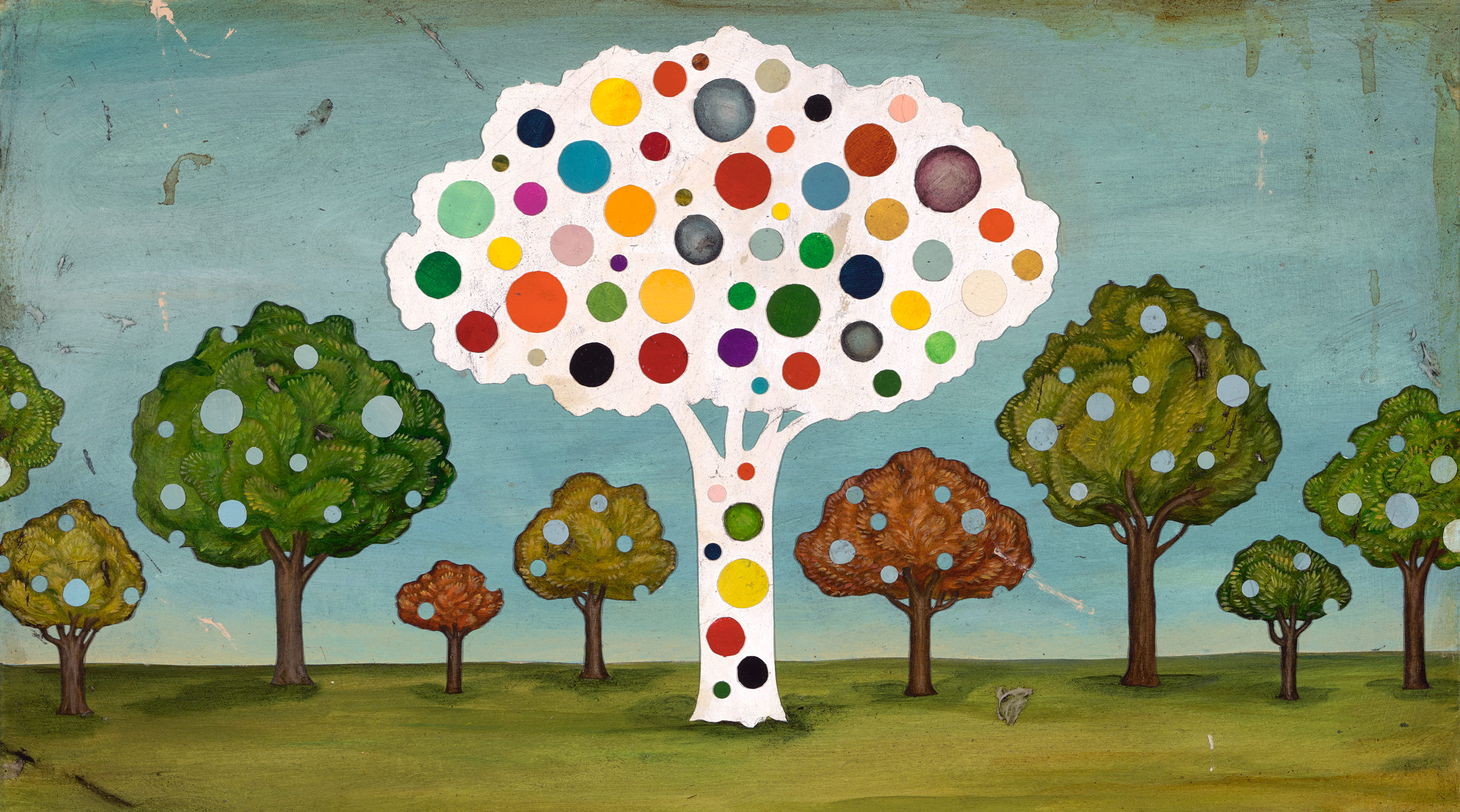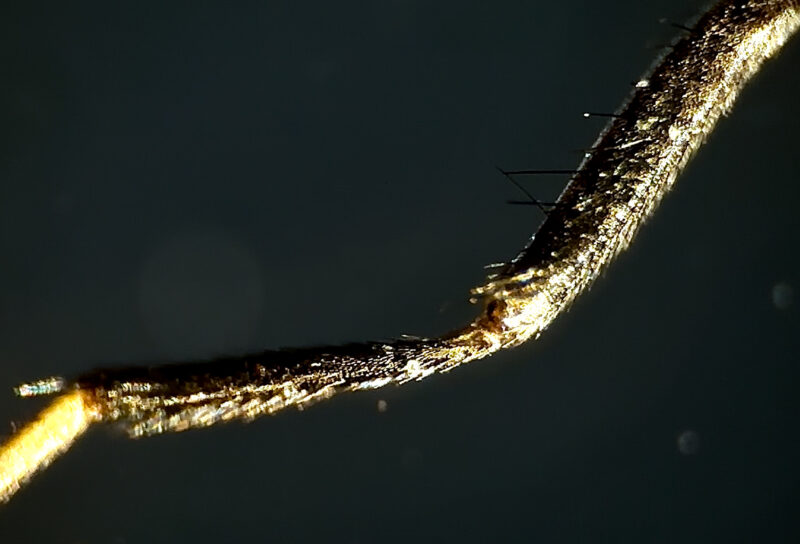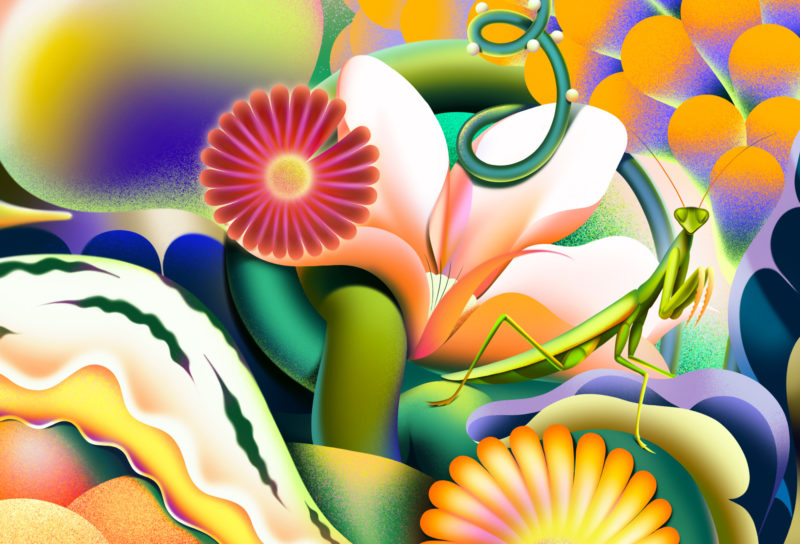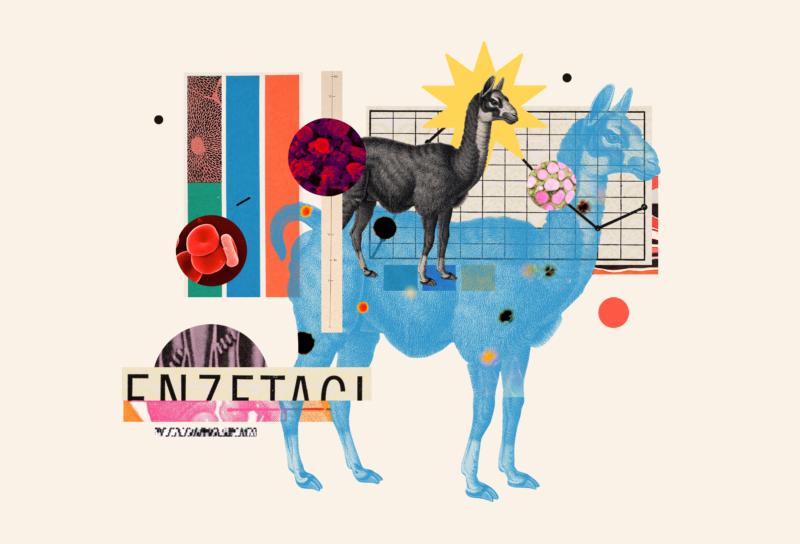THE DAY AFTER EARTH DAY at the New York Botanical Garden was one of those spring stunners when half the city comes out to get their nature fix after a long, gray winter. Couples lolled on the lawns and shot photos of babies beneath blossoming crab apples. Parents pushing strollers past Azalea Garden and up Daffodil Hill eyed me suspiciously as I sidled up to a scraggly, bare tree beside the path.
Amid 250 acres of gorgeous organisms, this specimen was the homeliest of the bunch. Twelve feet tall, with spindly gray branches and raw cankers shredding its trunk, it was unlikely to feature in any baby photos that day. Yet I had come all the way from Vermont to see it. It was “Darling 4,” a 10-year-old American chestnut, and what made it remarkable was the fact that it was alive at all.
The American chestnut has been called the redwood of the East. From Georgia to Maine, up and down the spine of Appalachia, no other tree could match its grandeur. Its trunks rose 100 feet high and could reach 10 feet in diameter. With crowns that spanned a fifth of an acre, its prodigious nut crops were essential food for everything from bears to passenger pigeons. It was known as the cradle-to-grave tree because people were born in rot-resistant chestnut houses, warmed by chestnut fires, entertained by chestnut fiddles, and laid to rest in chestnut coffins.
Then, in 1876, a nurseryman imported some Japanese chestnut seeds that carried a fungus to which the American chestnut had no resistance. The blight was discovered in 1904 at the Bronx Zoo, a few hundred yards from where this scraggly young tree now stands, and it spread with shocking speed. By 1950, four billion American chestnuts — 99.9 percent of the species — had died, their bark ripped open to reveal a sickly orange rot girdling their trunks.
But this little tree in front of me wasn’t dying. I leaned in close and put my hands against it. There were half a dozen cankers up and down its trunk, but wherever the smooth gray bark had split, it had scabbed over, black and warty. The wounds looked contained. It was engaged in battle with the blight, and though it wasn’t winning the battle, it wasn’t losing, either.
The sign at the base of the tree read “American Chestnut Trial, Castanea dentata, Darling 4.” What it didn’t indicate was that this tree and two other chestnuts growing nearby were the only genetically modified organisms (GMOs) in the New York Botanical Garden. Born in a lab in Syracuse, Darling 4 was engineered by geneticists who inserted a wheat gene into a wild chestnut embryo extracted from an immature nut. The gene gives the chestnut the ability to make an enzyme that detoxifies the blight — a skill none of the four billion American chestnuts that preceded it ever developed.
Darling 4 doesn’t make enough of the enzyme to stop the blight completely, but its successor, Darling 58 — currently flourishing on a research farm at the State University of New York College of Environmental Science and Forestry in Syracuse — does. The goal is for the new tree to be distributed to nurseries and planted in forests throughout the East, marking a major milestone in the story of GMOs. Up to now, no genetically modified organism has been purposefully planted beyond a lab or a farm plot. Up to now, the line between wild nature and artifice has remained firm.
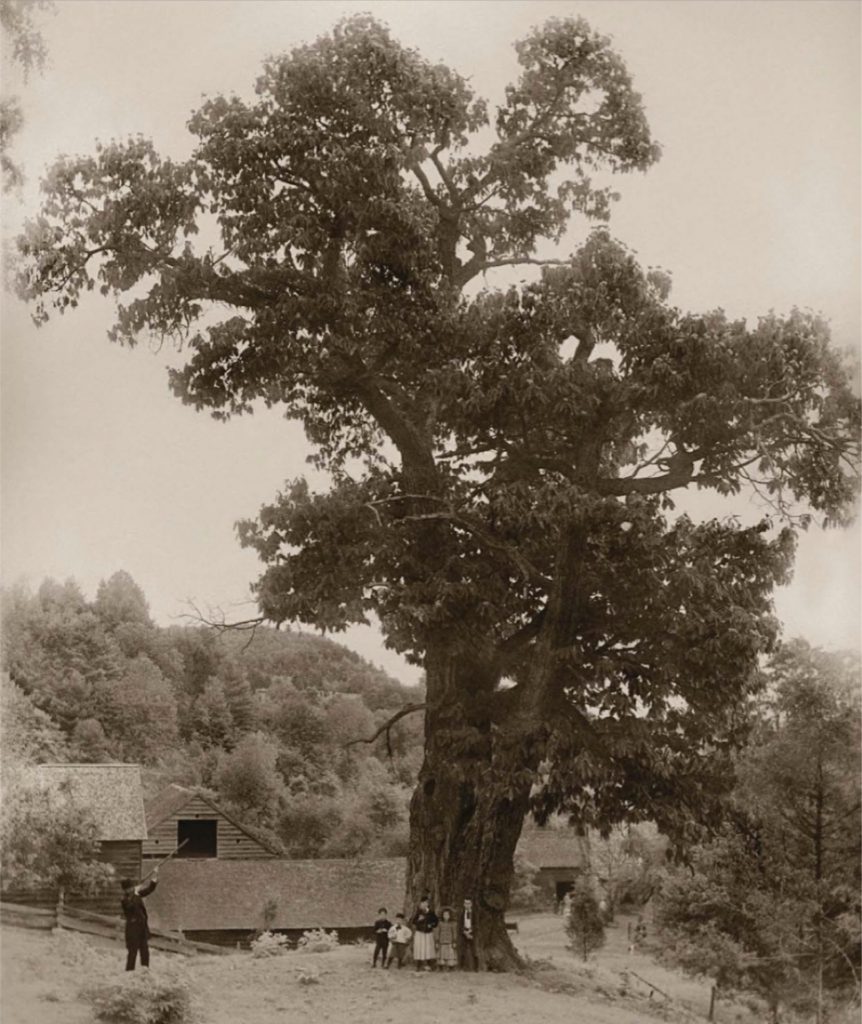
A large American chestnut tree, which succumbed to the blight around 1912-1913. Credit: Courtesy Hurley Heritage Society, Hurley, NY.
I gave the tree a pat. It felt strong and solid, like any old tree. Standing tall despite its wounds, shining in the bright April sunlight, it seemed stoic, almost noble.
Before it can be released into the wild, the transgenic chestnut has to pass a battery of ecological tests at SUNY designed to ensure that it acts just like a natural chestnut. Then it must be approved by the United States Department of Agriculture, the Food and Drug Administration, and the Environmental Protection Agency. So far the tree has aced all the tests. Approval is looking likely. And that is why, to those who are concerned about GMOs, it is the most dangerous tree in the world.
When I first learned about GMOs in the 1990s, I was repulsed. I was editing one of the first books on the coming era of genetic engineering. It was called Genetically Engineered Food: Changing the Nature of Nature, which pretty much summed up my feelings at the time. Each species was a masterpiece of evolution; why play God? Transferring an antifreeze gene from a cold-water fish to a strawberry (as people were proposing then) struck me as the full-on Island of Dr. Moreau, a freakish crossing of natural borders, and it seemed to me like we should steer clear of that island entirely.
Then along came Monsanto’s Roundup Ready corn and soy, some of the first agricultural GMOs, and all my concerns seemed validated. Roundup Ready crops contain a gene taken from a bacterium that makes the plants immune to Roundup, Monsanto’s blockbuster herbicide. Roundup kills everything green that it touches — with the exception of Roundup Ready crops. This genetic jujitsu allowed farmers to spray Roundup directly on their fields, killing all the weeds, which, in turn, saved the farmers a lot of time and money, and they embraced it enthusiastically.
But a lot of us didn’t. As the disastrous consequences of chemical farming were becoming all too clear, the invention of a crop intrinsically dependent on herbicide seemed extraordinarily problematic. What would all that Roundup do to the microbial life in the soil? What would it do to us? The International Agency for Research on Cancer classifies glyphosate, the active ingredient in Roundup, as a probable carcinogen. That’s not a particularly damning classification (things like red meat, wood smoke, hot beverages, and shift work are in the same category) but it convinced a California jury to award $289 million to a groundskeeper who sued Monsanto for Roundup’s role in causing his lymphoma in 2018. Dozens of countries, mostly in Europe, have now restricted its use.
Although GMO corn and soy are widely grown in North and South America, GMOs have faced furious resistance elsewhere. Their cultivation is banned in much of Europe, as well as Russia and a few other countries. Genetically engineered trees seem equally unpopular. Research on engineering trees goes back almost as far as research on engineering crops, and most of the work has focused on engineering the same profit-boosting traits, such as disease resistance, insect resistance, herbicide tolerance, cold tolerance, and faster growth.
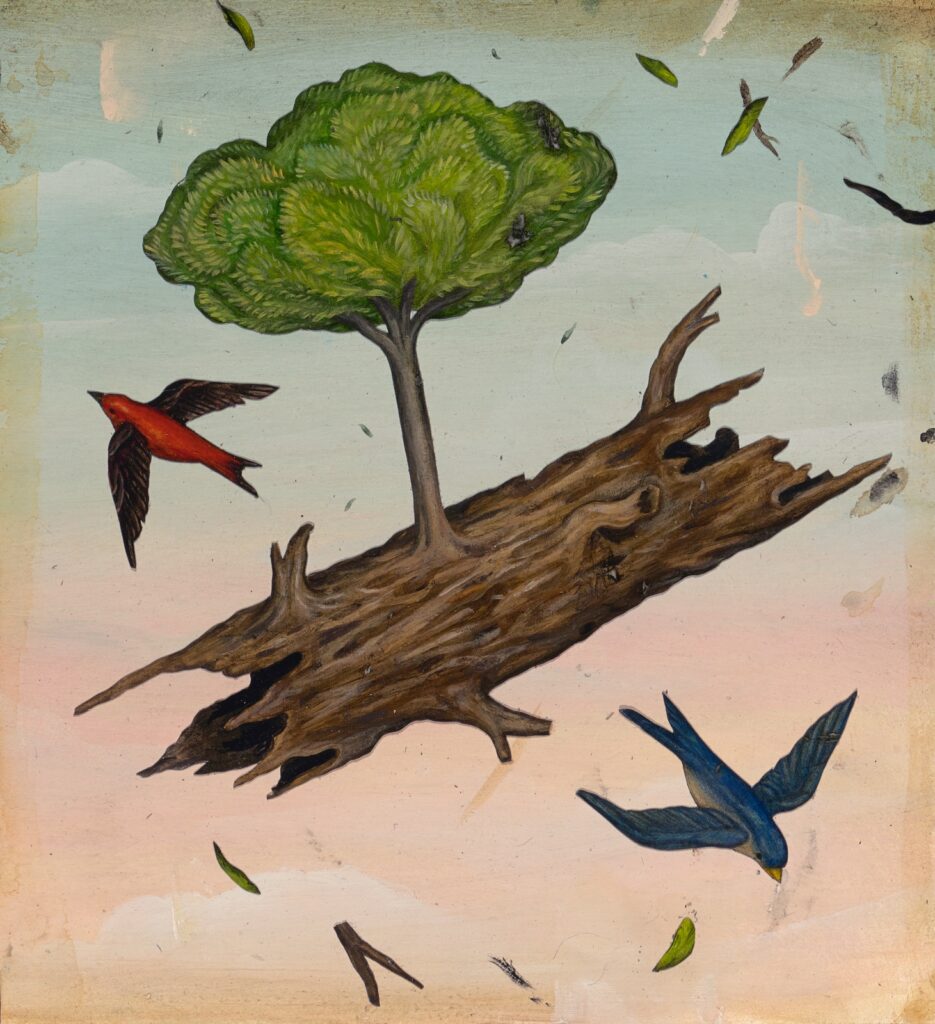
But there is one big way that genetically engineered trees are different. The majority of our commodity crops are annuals. They live for just a few months and then die in the fall. Their interactions with the natural world are limited. Trees, on the other hand, live for years. Even in an agricultural context, they provide food and shelter for insects, fungi, birds, and mammals. Every year, a mature tree will flower, wafting transgenic pollen over the landscape that could hybridize with wild cousins. That adds up to a lot of integration with nature, and thus far regulators have been cautious.
To date, only a handful of transgenic trees have made it to field trials, including frost-tolerant eucalyptus trees and fast-growing poplar and eucalyptus, and only two have had significant commercial rollouts: an insect-resistant poplar in China, and transgenic papayas in Hawaii and China. ArborGen, the company that invented the cold-tolerant eucalyptus, petitioned the USDA for clearance to farm the tree in the U.S. back in 2011, but it is still waiting for a ruling.
Its only purpose is to save a beloved species from extinction.
Given the current climate of anti-GMO sentiment around the world, it seems unlikely that any new commercial GMO trees will find public acceptance. All extend the spread of corporate-controlled, industrial agriculture; all seem unnecessary; all are easy to argue against.
None of this applies, however, to the genetically engineered chestnut. No one is seeking to profit from it. Its only purpose is to save a beloved species from extinction.
When Cryphonectria parasitica, the fungus that causes chestnut blight, encounters a chestnut tree, it slips through a fissure in the bark and oozes into the cambium, where it injects oxalic acid into the tissue of the tree. The acid ruptures the plant cells, and the fungus feasts on the nutrients that spill out. Then the fungus expands and repeats the process all over again, spreading around the cambium and shredding the bark until the tree’s circulatory system is severed, and the tree dies.
Virtually no chestnut has been spared, but for more than a century, some individuals have clung to existence, using the energy stored in their roots to send up new shoots continuously, only to have those shoots die back a few years later once the fungus finds them. There are still millions of root systems sending up shoots all over the East, but as their energy reserves dwindle, fewer shoots appear every year.
In 1983, The American Chestnut Foundation was formed for the purpose of restoring the tree. Efforts focused on a species of Chinese chestnut that has natural resistance to the blight. It isn’t very similar to the American chestnut, with neither the stature nor wood quality, but the Chestnut Foundation hoped to cross the two species (using pollen from survivor trees) and then continue to backcross new generations with pure American chestnuts until they had a line of trees that was resistant to the blight but otherwise almost entirely American.
The Chestnut Foundation has been a model organization, raising millions of dollars and galvanizing public support for the project, but after 30 years of crossing and backcrossing, its only blight-resistant hybrids still contain thousands of genes from the Chinese chestnut. The trees cannot be considered American chestnuts.
There was a Plan B, however, an effort that began in 1990 when the New York chapter of the foundation engaged a SUNY professor of biology named William Powell to try to solve the problem through genetic engineering.
One idea was to transfer the resistance genes from the Chinese chestnut to the American chestnut, but Powell quickly realized that it would be technologically impossible to transfer such a complex mix of genes. Instead, he discovered that a large number of plants make an enzyme that detoxifies oxalic acid. The gene turned up in many of our food plants, from wheat and bananas to rice, spinach, corn, and cacao, as well as wild plants like mosses, azaleas, and grasses. Half the planet has been munching on it for millennia. It was a eureka moment: A single gene could nullify the blight, and it was already ubiquitous in our ecosystems and diet.
Powell took the wheat gene responsible for the enzyme and inserted it into an American chestnut. He also had to insert a promoter — a string of DNA that functions like a genetic throttle, controlling how active a gene is. Darling 4 only made enough of the enzyme to slow the blight, so Powell switched to a stronger promoter for Darling 58, the tree now being tested at Syracuse. Darling 58 stopped the blight in its tracks.
Darling 58 is now being crossed with the surviving wild chestnuts, via hand-pollination, to produce a line of hundreds of unique trees that will embody the full breadth of American chestnut biodiversity. Unlike the hybrid chestnuts, these trees will have the full suite of 38,000 native chestnut genes. Later this year, SUNY will submit its application to release the chestnut to the EPA, the FDA, and the USDA. If the agencies all approve, seedlings could be ready for distribution by 2021.
That has been cause for alarm at the Campaign to Stop GE Trees, an alliance of little-known environmental groups led by the Global Justice Ecology Project, which has brought all its guns to bear on the chestnut. One of its press releases stated, “If this tree were greenlighted, the impacts to forests, biodiversity and people would be nearly impossible to predict and potentially devastating.”
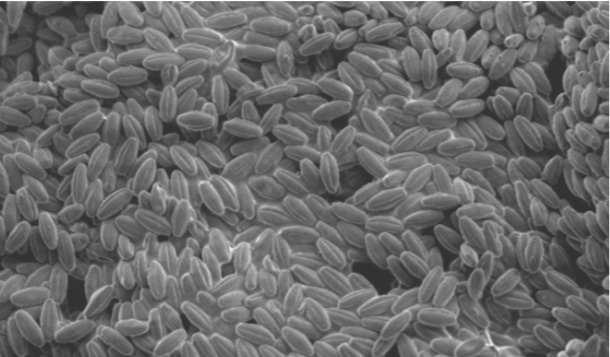
Or not. That heated rhetoric seemed appropriate for invasive, frost-tolerant, corporate-controlled eucalyptus plantations, but it takes a lot of imagination to envision a scenario in which these slow-growing trees suddenly unleash devastation on people or forests. The tree is native to the ecosystem and hasn’t been engineered to tolerate herbicides, grow extremely quickly, or do anything else wildly unnatural, and we already know that the introduced gene is safe for humans and other animals.
But because the transgenic chestnut would be the first GMO released into the wild, the burden of proof is extra high. The scientists at SUNY have tested as many aspects of its interactions with its future environment as possible. They’ve checked to make sure mycorrhizal fungi colonize its roots normally. They’ve confirmed that grasses, forbs, shrubs, pine trees, and maple trees will germinate in its leaf litter. They’ve fed its leaf detritus to insects and tadpoles, and they’ve let bumblebees feast on its pollen.
In all the tests, there have been no differences between the transgenic chestnut and the wild chestnut. But one result stands out. Tadpoles fed either transgenic chestnut leaf litter or wild chestnut leaf litter developed equally well, but tadpoles fed maple litter grew only half as fast, and tadpoles fed beech litter did even worse. Maple and beech leaves are two of the foods tadpoles have been eating for the past century, ever since the chestnuts disappeared. Perhaps the ecosystem misses the chestnut more than we know.
Yet even though the chestnut is being developed for the public good, the Campaign to Stop GE Trees has raised concerns that it will open the door to commercial entities with less benevolent plans. In 2019, the Campaign published a 40-page report on the transgenic chestnut, documenting early support the project received from corporations including ArborGen and, indirectly, Monsanto. Almost simultaneously, two longtime members of the Massachusetts/Rhode Island chapter of The American Chestnut Foundation resigned in protest. “We are unwilling to lift a finger, donate a nickel or spend one minute of our time assisting the development of GE trees or using the American chestnut to promote biotechnology in forests as any kind of ‘benefit’ to the environment,” they wrote in their resignation letter. “Looking back, if we had known on day one that Monsanto and ArborGen had an interest in — and funded — the GMO chestnut, we would not have gotten involved.”
That funding turned out to be relatively minor (and Powell’s group is surely kicking themselves for having taken it), but one thing the report makes clear is that both sides, industry and environmentalists, believe that the chestnut will help pave the way for GMO tree nurseries.
And I think they’re wrong. If anything, the ecological and cultural preeminence of the chestnut, its precarious existence, and the care being taken by the researchers to get it right will set a precedent that no tree-farm project will ever be able to meet. On the other hand, it could indeed be a trailblazer for future efforts to save other endangered species using genetic engineering. Which is why, to me, the tree debate is a distraction from the more important question raised by the chestnut project: Does a GMO in the forest diminish its naturalness?
To answer that, we need to grapple with another question: How natural is the forest, anyway? And, perhaps even weirder: How unnatural is a GMO?
When Monsanto first tried to transfer genes from bacteria into plants in the 1980s, many experts, including those inside the company, thought it was impossible. They believed the two organisms were too far apart on the evolutionary tree of life to share genes. But one of the big takeaways from the genetics revolution of the past decade is that life is shockingly plastic. DNA is just DNA, and cells aren’t too picky about where their source code comes from.
How natural is the forest, anyway?
Bacteria trade genes like Pokémon cards, even among unrelated species. It happens all day long in every pond and crevice. And although bacteria are particularly promiscuous, they aren’t alone. Genes flow between species, often with the assistance of parasites or pathogens that move between hosts, bringing foreign DNA with them. Every now and then, some of it gets pasted into the host’s genome, and that turns out to be a surprisingly important driver of evolution. Scientists no longer envision a classic tree of life, with plants, animals, and fungi all diverging on isolated branches, bacteria sticking to a separate trunk, and so on. Instead, new diagrams look more like an interstate map, with shoots curling off some arteries and merging with others.
These genetic booster shots occasionally produce something awesome. For example, the sweet potato came into being at least 8,000 years ago when its wild ancestor accidentally incorporated genes from a bacterium that caused its roots to become fat and starchy. The cow genome is 25 percent snake. Civilization wouldn’t exist without gene transfer.
And neither would we. The ancestor of mammals developed a placenta by repurposing genes that an invading virus used to make a protective membrane around itself. Some time later, mice, cows, marsupials, and primates all independently upgraded their placentas when better viral genes came along. Life is always willing to play around, always looking for something that might work just a little bit better.
Every species is a hodgepodge of genes cobbled together from earlier life-forms. The human genome is about 8 percent virus. We carry dozens of genes that came directly from bacteria. The mitochondria that power our cells were once free-swimming bacteria.
In other words, we are all GMOs, the beneficiaries of freakishly unlikely genetic mash-ups, and the real Island of Dr. Moreau is that blue-green botanical garden third from the sun. Rather than changing the nature of nature, as I once thought, this might just be nature’s nature.
Some people may find this unnerving, but I have come to see it as the ultimate sign of universal fellowship. We’re all molded from the same mud.
The more I’ve come to understand this, the more I’ve begun to question notions of genetic purity, whether in a species or in an individual. The controversy over the transgenic chestnut made me think of a girl named Emily Whitehead, a pediatric cancer patient who recently became the first child to be saved by a small genetic addition called CAR-T therapy. She nearly died from leukemia in 2012, at age six, but then her white blood cells were removed from her body, augmented with lab-made genes that allowed the white blood cells to identify and kill her cancer cells, and returned to her body. She has been in remission ever since.
Not only are those genes alien to normal human make-up, they aren’t found anywhere in nature. She’s one of the only living things to possess them. Does that make her less human? Of course not. She’s the same impressive girl she always was, with one notable exception — she’s healthy.
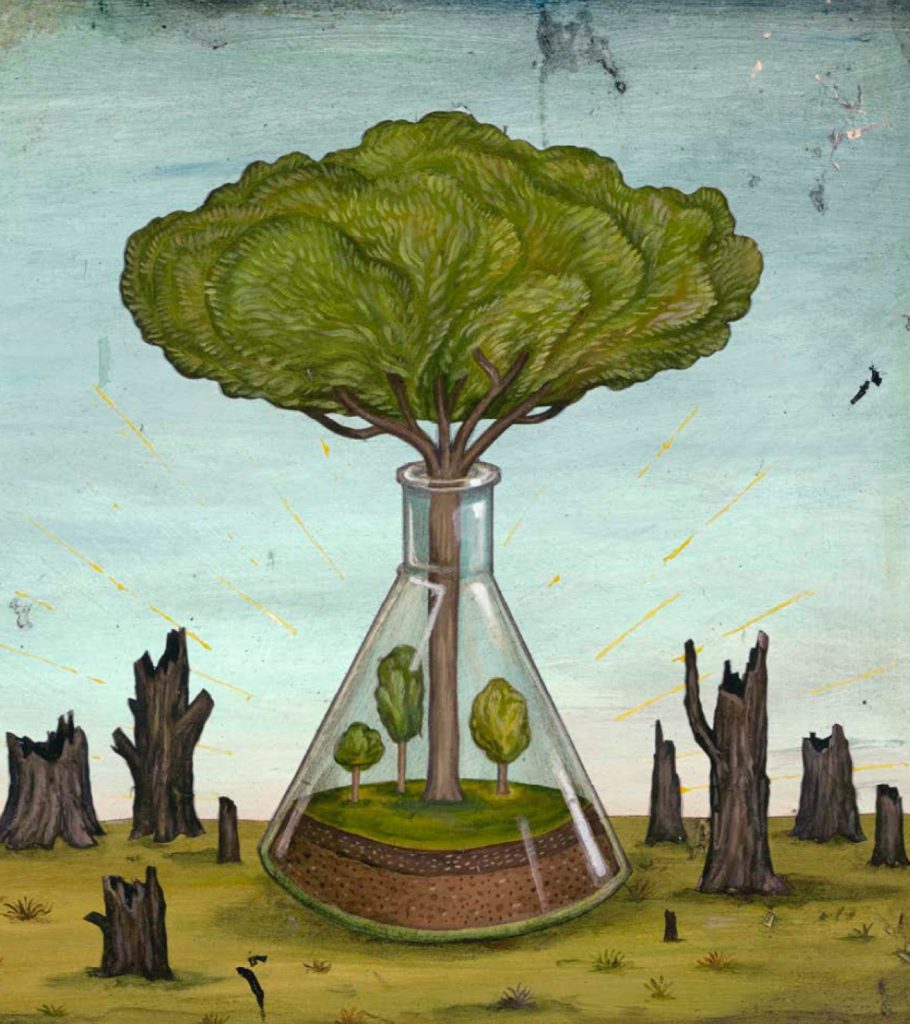
It’s Earth Day again, and I’m pressing my hands against a tree whose fissured bark is eerily similar to Darling 4’s. But this isn’t a chestnut. It’s a tall, handsome ash near my house in Vermont, and it’s dying.
All the ashes on my land will soon die. They’ve been attacked by the emerald ash borer, an Asian beetle that arrived in Michigan twenty years ago in a packing shipment and set out on a scorched-earth march to the Atlantic, killing 99.7 percent of the ashes in its path, hundreds of millions of trees. Disposing of the urban trees alone is expected to cost $60 billion, while lost timber in the forests adds another $280 billion. It’s the most expensive insect invasion in American history.
As I literally hug this tree and stare straight up the barrel of its trunk into its canopy, I can feel what those citizens of Appalachia must have felt a century ago, knowing that they were going to lose a magnificent piece of their world. It’s heartbreaking.
Many of the nicest trees on my land are ashes. I love their straight trunks and feathery foliage, which turns a stirring bronze-purple in autumn. I love the way the straight-grained firewood splits effortlessly, convincing me I’m a better woodsman than I am. And I love the morels that emerge around their roots in spring. I can’t imagine this place without them.
If I could hire some hotshot geneticist to engineer resistance into them, would I do it? Or should I let nature take its course?
I mull these thoughts as I step away from the tree and start my evening walk, following a path through the first dandelions of the year and into a mixed woods of beech, birch, maple, and ash. Gnarled apple trees guard an old cellar hole. From the vernal pools, the spring peepers have begun their sleigh-bell serenade. The path winds up a rocky slope of spruce and hemlock, the ground spongy with needles. Ahead, I glimpse the tail of a fisher as it darts away. It all feels wonderfully wild.
I’ve been walking woods like these all my life, searching for boletes and bear sign, and when I hear the word nature, this is what rises in my mind’s eye. As a kid, it all felt eternal. Yet those old cellar holes are reminders that a century ago Vermont was a pastoral clear-cut of sheep farms. These woods are new. The fisher was reintroduced in the 1950s to help control porcupines. The dandelions and apple trees aren’t native at all, having arrived with the colonists. My wilderness is an unruly botanical garden.
And yet it is wonderfully wild. I ask myself what I’m searching for on these walks, what I need from nature, and the peepers provide an answer. I’m surrounded by voices in a non-human register. The apple trees’ ancestors may hail from Kazakhstan, the fishers may still be getting reacquainted with the place, but they are all a part of a community of plants and animals pursuing their own interests, a colloquy of DNA. People are part of the mix, but the conversation is about something other than us, and the thrill is in the eavesdropping.
The conversation is about something other than us, and the thrill is in the eavesdropping.
When I hear bumblebees buzzing in my apple blossoms, I’m not bothered by the fact that this conversation never could have taken place until 500 years ago, when the apples arrived. If anything, I’m delighted by how well these relative strangers are getting along. Even the founding members of this community, the trees that colonized the area in the wake of the retreating glaciers roughly 13,000 years ago, are newbies in geological terms. I’ve stopped thinking of these northern forests as something that has existed since time immemorial. I think of them as a community of migrants and refugees, a polyglot society of survivors.
Yet this is also a community in distress. The ashes are just the latest victims. The needles of nearly every hemlock I pass are clumped with white, waxy balls produced by the woolly adelgid as it sucks their sap. Most eastern hemlocks, from Canada to the Smoky Mountains, will soon be gray ghosts. The American elms are already gone, having succumbed to Dutch elm disease long ago.
Ugliest of all are the beeches, their gray bark cankered with beech bark disease. On big, healthy beech trees, the bark is so smooth that you can spot the claw marks of bears who climbed the tree to get the rich beechnuts. Throughout the Northeast, beeches have become an increasingly important source of food for bears since the chestnuts disappeared. But you don’t see many beeches like that anymore.
All these declines are due to the introduction of insect or fungi species to which our native trees have little resistance. The impact on our forests is massive, and only getting worse as the climate warms. In every case, it’s because human beings are whisking organisms around the planet at unholy speeds, bombarding ecosystems with thousands of alien genomes. There’s nothing natural about that. Any beeches or hemlocks that survive will have different DNA from the ones that perish. The spring peeper genome is undoubtedly recalibrating right now to adjust to shifting seasons. Everything is changing, whether we like it or not, and soon we may have to decide whether to let some of these species go extinct on principle, in the name of what’s natural.
It’s almost dark as my trail drops down into the field behind my house. Dew is already forming over the vernal pool in the hollow. As I approach, the spring peepers sense my presence and go silent, but I can still see them scooching through the puddles. I think of the tadpole study, and I wonder if this place would welcome some chestnuts. It seems like a good spot for a Darling 58, when it’s released. Perhaps some of these animals will sample their first chestnut leaves, and feel some ancestral ripple of ecstasy deep in their genomes. More likely, they won’t even notice. They’ll just eat, and life will go on.
A version of this story and illustration was originally published in Pacific Standard.
